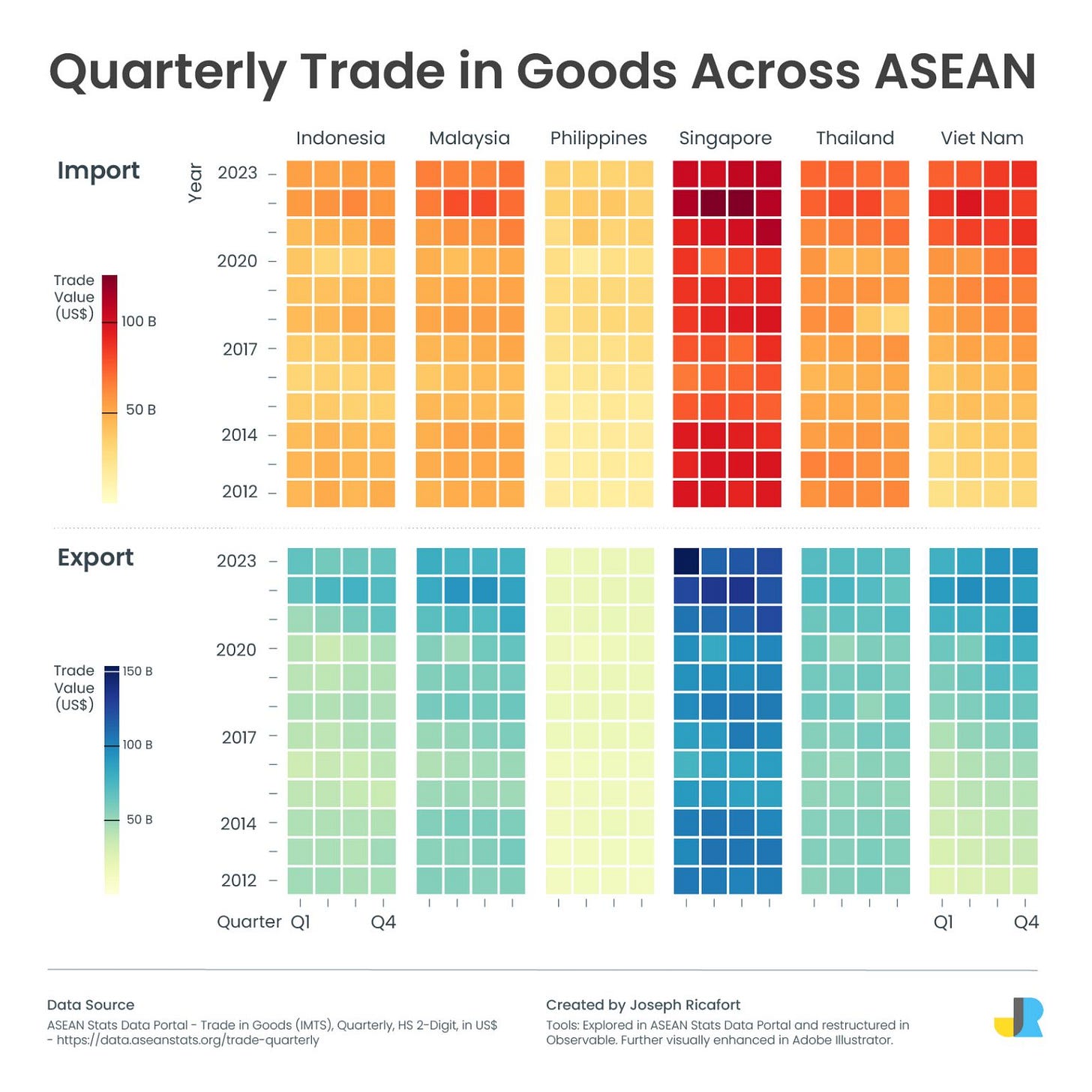#14: Chasing highs and hiding lows
Addressing the link between youth addictions and mental health in Southeast Asia
Welcome to this week’s edition of SEAmplified! Your latest insights on Southeast Asian youth and youth politics in 9.75 minutes.
⌛This week in brief:
📌 To stop youths from chasing a high, help them open up about their lows
📌 This week, Seamplified: 29th April 2024 😄Finding joy
Finding Joy examines how Southeast Asian youths define and pursue happiness, and how society can empower their search for happiness. To stop youths from chasing a high, help them open up about their lows.
Vaping is the latest scourge afflicting Southeast Asia's youths, and its ills don’t seem to be abating anytime soon.
The data is truly concerning. Seven in 100 Vietnamese youths aged between 15 and 24 used e-cigarettes in 2022. In Thailand, vaping has been singled out as the leading cause of a nearly six-fold jump in young smokers aged 13 to 15 from 2015 to 2022. Even Singapore, known for its strict regulations, saw vaping possession cases soar by 58%, up from 5,000 cases in 2022 to 7,900 cases in 2023.
A lot has already been said about how vaping became so prevalent across the region: affordability and ease of access, aggressive marketing tactics, the ability to conceal vapes easily, lax enforcement of existing laws, and widespread misinformation about health effects all catalyzed its spread.
Despite growing concern, one critical aspect often overlooked in discussions on substance abuse, including vaping, is its link to youth mental health.
Research has pointed out a complex relationship between mental health and substance use. What causes mental disorders can also cause substance abuse. High stress, for example, puts an individual at risk of anxiety and depression, as well as a greater risk of substance abuse.
The scarier part is that this relationship is bidirectional: mental disorders can lead to substance abuse, but the converse is also true. Substance use can cause mental illnesses or lead to symptoms that resemble mental disorders by disrupting brain patterns or impeding impulse control. Vaping has been shown to worsen anxiety and depression; exposure to nicotine also weakens the ability to deal with stress.
It’s a vicious cycle—and arguably the biggest reason why helping youths manage their mental health better needs to be part of the conversation around addictive substances.
The bigger lesson for Southeast Asia? Youths across the region don’t have many healthy avenues for managing their mental health.
For one, professional help is still lacking. There were just 5.3 mental health professionals per 100,000 people across Southeast Asia in 2021, and most regional countries also had less than one psychiatrist for every 100,000 people.
Then there’s social stigma. Two years ago, less than a third of Southeast Asians felt comfortable openly talking about mental health, with discomfort rates being 10% higher in urban areas compared to rural ones.
Southeast Asian youths may be unable to rely on an immediate support network as well. A 2022 survey found that 13% of nearly 7,800 students from across Vietnam felt lonely most of the time, and a separate report found that as many as 50% of Vietnamese students felt stressed out by academic and parental pressure. In Singapore, more than half of the youths aged between 21 and 34 felt anxious during face-to-face interactions.
It is evident that stringent policies alone are insufficient in curbing the rise of vaping. Not only have cases of vaping possession in Singapore gone up despite vaping being declared illegal since 2018, but cannabis use in the city-state has also risen to a 10-year high in 2023 despite severe penalties. Even in Thailand, where higher taxes on e-cigarettes were considered, the underground market remains a significant issue, much like it is with tobacco.
Some Southeast Asian countries are already beginning to address the issue more holistically. Singaporean schools are stepping up education efforts not just for students, but also for parents. In 2023, Malaysia’s education ministry also rolled out the IMFree programme for primary school students to spread awareness of and prevent vaping in schools across the country.
There’s one more missing element: community. Across the world, many measures call for an “all-of-society” approach towards tackling substance abuse. This approach should also involve providing mental health support to youths, and making sure they truly receive a listening ear. Such initiatives will dismantle the stigma surrounding mental health issues in Southeast Asia.
That said, mental health isn’t the only cause of substance abuse. But tackling youth mental health is playing the long game, and winning it could shield Southeast Asia’s youths from the next scourge that comes.
🌏This week, SEAmplified
This week, SEAmplified is our weekly roundup of the latest youth-targeted community developments, insights, and news from across Southeast Asia. News roundup
Singapore’s youths can take a respite from the cost of living crisis, as food and service inflation eased to 3 and 3.9 percent respectively in March, compared to 3.8 and 4.2 percent in February.
Thailand and Laos will open their fifth Friendship Bridge this November, boosting the logistics and tourism industries. A growth in investment and job opportunities is expected, and youths can look forward to gaining meaningful employment across borders.
Indonesia’s incoming president Prabowo has promised to end poverty and corruption, and improve the lives of all Indonesians after the Constitutional Court rejected all electoral challenges against his win. Youths can observe if the new president will address their concerns over education and new job opportunities.
Malaysia has launched an investigation for corruption into former Prime Minister Mahathir Mohamad. This comes as the country is moving to crack down on corruption, which is up for observation for Malaysian youths and the wider population.
Philippines Metro Manila recorded its hottest temperature in history on 38.8 degree Celsius on April 27, amidst a heatwave across the country and Southeast Asia. High temperatures have forced more than 7,000 schools to stop in-person classes, which could affect Filipino youths' studies.
SEA Visualized
It’s no secret that Singapore leads Southeast Asian nations with more than half of total regional exports. But as the heatmap above from Straits Times digital graphics designer Joseph Ricafort shows, the city-state is also the region’s largest importer, with other countries trailing some distance behind.
Impressed? Joseph’s currently on a #30DayChartChallenge - check out some of his other works on this post.
Community Highlights
How do Southeast Asians perceive purpose at work? A groundbreaking report by ManpowerGroup found that only 21% of regional respondents felt “very satisfied” with their current level of meaning at work. More on purposeful work in Southeast Asia here.
Maritime security is paramount in Southeast Asia, but how exactly does the region score on this front? Australia-based La Trobe University’s latest “Blue Security” edition has more on this.





